Goose Overview
The Differences
[/jump-links]
Swan and goose are two similar-looking waterfowl. The two birds have similar temperaments but there are still some significant differences between the two.
A swan is much larger than a goose. Also, a swan is a white waterbird with a long neck and legs. A goose is a common waterfowl often found near lakes, ponds, and shorelines.
Let’s help you tell them apart so you can enjoy your backyard wildlife a little bit more.

Visual Differences
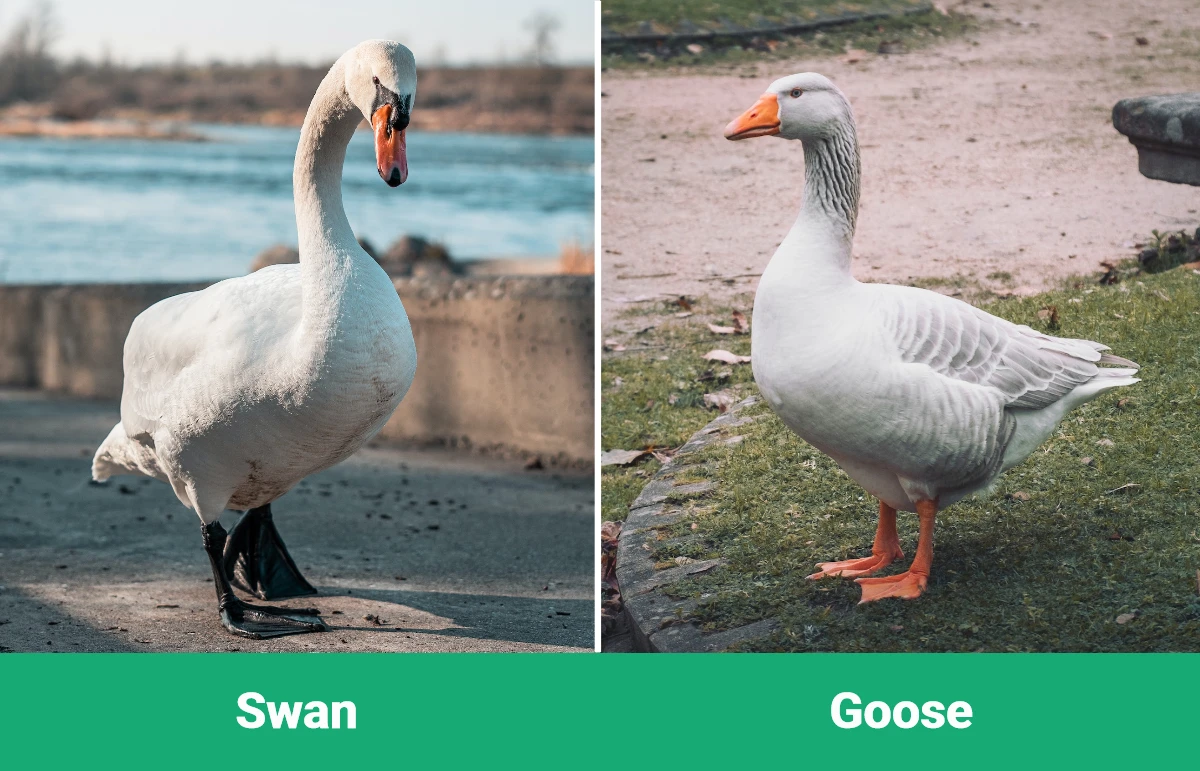
At a Glance
- Origin: Northern Hemisphere (US, Canada, UK) and random locations in the Southern Hemisphere
- Size: 59 inches (1.5 meters)
- Lifespan: 12 years
- Domesticated: No
- Weight: 15 kg
- Wingspan: 1 meters
- Incubation Period: 35 to 41 days
- Origin: Egypt (Africa)
- Size: 30 to 43 inches (0.75 to 1.1 meters)
- Lifespan: 10 to 15 years
- Domesticated: Yes
- Weight: 10 kg
- Wingspan: 50 to 73 inches (1.27 to 1.85 meters)
- Incubation Period: 30 days

Swan Overview
In North America, the swan is also known as the black-necked swan. The species is native to much of North America and Eurasia. It has been introduced to Northern Africa, New Zealand, and Australia in recent years.
A swan is any species of goose-like bird in the family Anatidae. Anatidae is the largest family in the waterfowl order. Swans are grouped with the closely related geese in the subfamily Anserinae, where they form the tribe Cygnini.
These birds eat mainly fish and plant. They use their long, sensitive bills to root in the mud and shallow water for aquatic vegetation. They eat pondweeds, water lilies, duckweed, water milfoil, and algae, reeds, grasses, and small plants.

Characteristics and Appearance
Swans have a wide wingspan, neck, and long legs. The body of these birds is entirely white with a black beak and feet. They’re large water birds and can fly superbly.
There are different types of swans such as Trumpeter swan, Black swan, Tundra swan, Mute swan, and many more. The trumpeter swan can grow as tall as three meters, while the black swan can grow up to 1.8 meters in height.
Both the male and female swan have similar appearances except for their size difference. Male swans are generally larger than females. But they have similar characteristics.
Both sexes have slender pointed beaks. They use them to catch food. The male’s beak is longer than the female. It helps it find food at the bottom of the pond.

Swans have powerful wings to help them fly above the water surface. They have webbed feet, which help them swim through the water.
The cygnet is a baby swan. Its appearance is like that of its parents, but it’s smaller in size. Cygnets are hatched with their feather-covered body. They take around 120 days to grow their feathers fully and become independent birds.
Swans spend most of their time in the water, where they hide from predators, such as tigers and other animals which prey on them.
Uses
Swans are used for ornamental purposes. They cannot be domesticated. It’s because they love to wander freely and fly to any region they wish to. So, it’s not advisable to interfere with their natural habitat or keeping them as pets.
These birds live in lakes, rivers, and parks across Europe, North America, and other parts of the world. They have been featured in historical texts. These waterbirds were associated with royalty due to their beauty.
Swans are crucial water birds because they eat up all the algae formed on the lake. It keeps the lake clean and fresh. These birds also keep the water level normal.
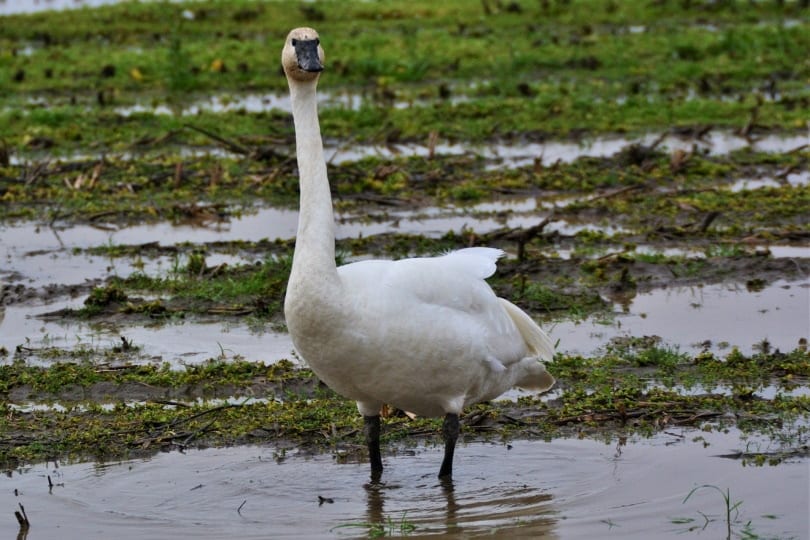
They’re elegant birds. They were once thought to be a symbol of love and grace. It’s an association that has endured through the ages. Each culture has its interpretation of what a swan represents. But it’s generally agreed that the sight of a swan is inspiring.

Goose Overview
The goose is a bird found in the wild and on farms. Throughout history, they have been domesticated by many people. But, some of them live in the wild. Usually, geese are found near bodies of water, but they also like to migrate a lot.
They can be found in many parts of the world, including Antarctica. Besides, some species of geese have been known to migrate over 10,000 miles per year. The migration of geese is an amazing phenomenon.
Geese are members of the Anatidae family of birds. They belong to a subfamily known as Anserinae. Geese are found in temperate regions, in the wild, near lakes, marshes, ponds, and rivers. There are around 20 species of geese around the globe.
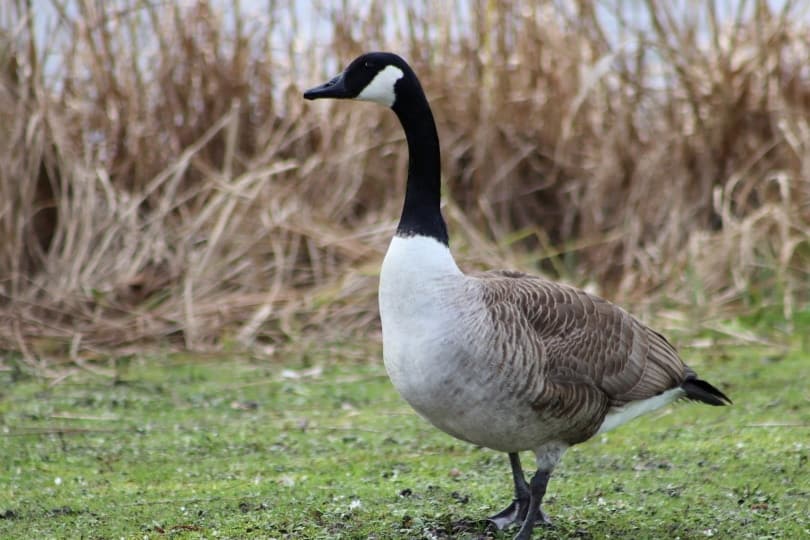
Geese are omnivorous, like humans. They have a sharp, pointed bill to poke for food and a wide gape to accommodate larger pieces of food. Geese eat grasses, plants, berries, seeds, leaves, and insects.
During the summer months, they feed on aquatic plants. They also eat vegetables and grains, such as corn, during the winter months.
Characteristics and Appearance
A goose can live on land or in water. It has webbed feet that are helpful when swimming. All geese have wings with which they fly and become airborne for long periods.
Geese are known for their migration patterns. They spend most of the year in colder climates. But, when their food supply decreases, they migrate south to warmer locations.
Most geese have a thick head of feathers called a “crest.” It serves as a decorative mixture of red, white, and black colors.
They also have larger eyes that help them see through the dense bush where they live. This, combined with their strong necks, allows them to see predators or intruders from far before they are even close enough to be a threat.

The geese use their tails for balance when walking. It helps them move faster when running from predators. Different geese have different appearances. Some are light gray, and some are white with black stripes.
Their heads vary in shape and size depending on the type of goose. Geese can measure up to four feet in length and weigh eight pounds or more.
Uses
Usually, geese are guard animals because they can sense danger and defend against intruders with their wings and beaks. These water birds have also been used to guard property and crops. They will honk when a stranger approaches the area.
Also, geese can make good pets because they are loyal and intelligent. But they tend to be loud and make a mess wherever they go.
Goose feathers are known to be the softest of all other bird feathers. They’re used to make quilts and pillows.
Also, a few people eat goose meat and eggs. The meat is quite fatty and high in cholesterol but it’s also flavorful. It is also dark and somewhat dry thus making excellent roasts, stews, and pies.
Goose fat has long been used in cooking and can be substituted for other types of fat in most recipes.


What Are the Differences Between Swans and Geese?
Swans and geese are two of the most popular birds in the world. Though both species are water birds, there are several differences between them as seen below.
1. Tail feathers
Swans have long tapered tail feathers. Geese have shorter and fatter tails that are almost rounded. Also, the tail feathers of a swan are all white, while geese have black tips on their tail feathers.
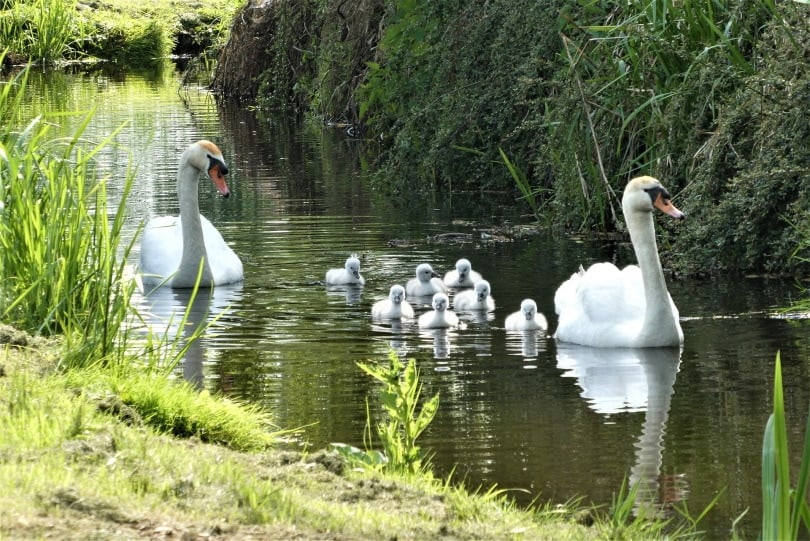
2. Bill
The bills of swans are longer and more curved than those of geese. Swan bills also have a soft orange or pink color, while goose bills are black.
3. Size
Swans are larger than geese. Swan males measure between 1.2 to 1.5 meters tall and weigh 13 to 20 kilograms. Females measure a little over one 1.1 meters tall and weigh about ten kilograms.
On the other hand, geese only reach heights of about one meter. They weigh about eight kilograms for females and ten kilograms for males.
4. Color
Swans are white with black wingtips. Geese come in various colors including, brown, gray, silver, white, and even blue.

5. Breeding Habits
Swans and geese have different breeding habits. Swans are monogamous, but geese are not. Geese mate for life, but both parents take turns sitting on the eggs in the nest.
6. Behavior
Swans are more aggressive than geese when it comes to their behavior towards humans. Geese become aggressive only if they feel threatened. They can also become aggressive when they want to protect something crucial such as their nest or eggs.
7. Habitat
Swans live in cold habitats in the northern hemisphere. They also prefer areas where there’s plenty of water and food supply for their cygnets.
On the other hand, geese live around marshes or wetlands in the northern hemisphere. They also live in some parts of the southern hemisphere. They prefer a place with abundant vegetation for them to feed on.
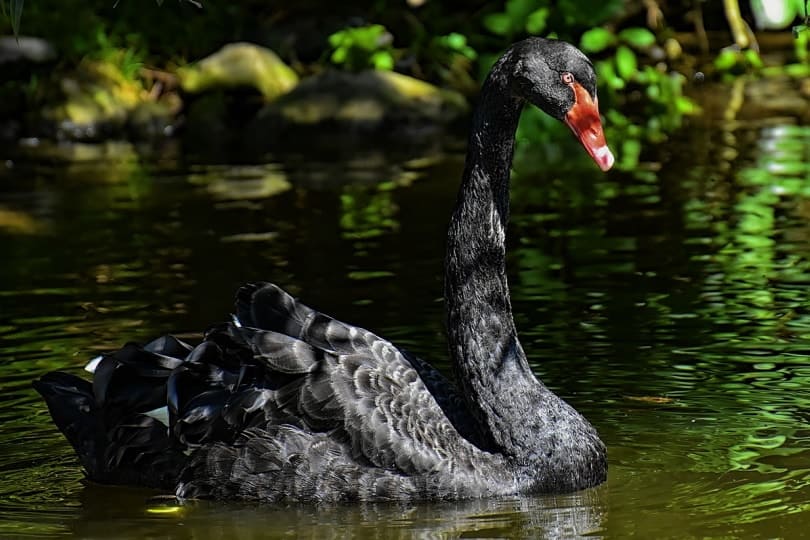

Which Breed Is Right for You?
Swans and geese are both good breeds of birds. They have interesting characteristics and traits. However, the swan cannot be domesticated even though some people would want to.
You can domesticate a goose and enjoy all the benefits mentioned above. However, for a swan, it would be difficult to tame it at home because it is quite huge and could be aggressive. It is best left to its natural habitat: in the wild.
Featured Image Credit: Top – NoName_13, Pixabay | Bottom – Alexas_Fotos, Pixabay
